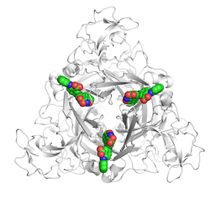Genomic 'firestorms' underlie aggressive breast cancer progression
Distinct genomic profiles useful for clinical diagnosis and therapy
Advertisement
The first high-resolution analysis of genomic alterations in breast tumors is reported in the scientific journal Genome Research. In this analysis, scientists from Cold Spring Harbor Laboratory, in collaboration with researchers from Scandinavia, identified three distinct patterns of genomic variation that underlie breast tumor formation, one of which - 'firestorms' - may be predictive of aggressive disease progression and short survival. "'Firestorms' are violent genomic disruptions that lead to destructive forms of breast cancer, even when the rest of the genome is relatively quiet," explains Dr. Jim Hicks, Senior Research Investigator at Cold Spring Harbor Laboratory and lead author on the paper. Large-scale DNA alterations in cancer cells-rearrangements, deletions, and duplications-may assist in the proliferation and progression of the disease.
Using a high-resolution genomic profiling technique called ROMA (Representational Oligonucleotide Microarray Analysis), the scientists tested genomic DNA samples from 243 breast tumor samples acquired from the Karolinska Institute (Sweden) and the Oslo Micrometastasis Study (Norway). The samples were from patients whose clinical history had been documented, which allowed the scientists to associate the genomic profiles with clinical outcomes.
Most strikingly, Hicks and his co-workers found 'firestorms' of genomic amplification-tight chromosomal clusters where DNA segments had undergone multiple rounds of breakage, copying, and rejoining in a concerted manner. 'Firestorms' were found in 25% of the breast cancer samples and were associated with negative clinical outcomes. The amplifications were generally limited to single chromosomal arms and were flanked by broad segments of low-copy-number duplications and deletions.
Another complex genomic profile, called 'sawtooth,' was present in 5% of breast cancer samples. It was characterized by narrow, low-copy-number deletions and duplications that were evenly distributed across the chromosomes. The 'simplex' profile, affecting 60% of the tumor samples, exhibited broad genomic duplications and deletions that only affected a single chromosomal arm. The remaining 10% of the samples exhibited a 'flat' profile, reflecting normal levels of copy number variation in the genome.
Original publication: Hicks, J., Krasnitz, A., Lakshmi, B., Navin, N., Riggs, M., Leibu, E., Esposito, D., Alexander, J., Troge, J., Grubor, V., Wigler, M., Børresen-Dale, A.-L., Naume, B., Schlicting, E., Norton, L., Hägerström, T., Skoog, L., Auer, G., Månér, S., Lundin, P., and Zetterberg, A.; "Novel patterns of genome rearrangement and their association with survival in breast cancer."; Genome Res. 2006, 16: 1465-1479.


















































